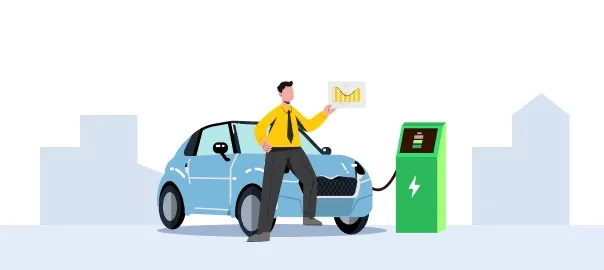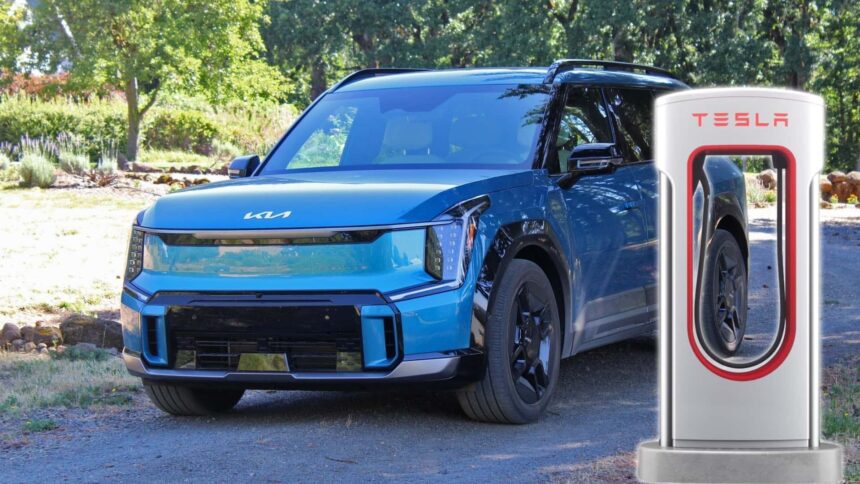As the electric vehicle (EV) revolution gathers steam, collaborations and agreements among automakers and charging infrastructure providers have become critical to facilitating widespread EV adoption. Kia, a prominent player in the EV market, recently announced its intention to enable its vehicles to use Tesla’s Supercharger network. However, delays in implementing this initiative have raised questions among EV enthusiasts and potential buyers.
Kia’s push to integrate with Tesla’s extensive Supercharger network is seen as a strategic move to enhance the charging options available to its EV customers. Tesla’s Supercharger network is widely regarded as one of the most reliable and expansive in the world, making it an attractive option for non-Tesla EV owners. Despite this, technical and logistical challenges have slowed Kia’s efforts to provide access to these coveted charging stations.
Technical Challenges in Compatibility
One of the significant hurdles in granting Kia’s EVs access to Tesla’s Supercharger network lies in ensuring technical compatibility. Tesla’s Superchargers were initially designed exclusively for Tesla vehicles, employing a proprietary charging standard. For Kia’s EVs, which primarily use the CCS (Combined Charging System) standard, adapting to this proprietary system involves complex engineering solutions.
Kia has indicated that retrofitting its vehicles with the necessary hardware and software to interface seamlessly with Tesla’s Superchargers is no small feat. Software updates and potential hardware modifications are required to ensure a smooth and reliable charging experience. This process demands rigorous testing to avoid malfunctions or suboptimal charging speeds, adding to the delay in deployment.
Negotiations and Agreements: A Slow Road

Beyond the technical challenges, the delay may also stem from protracted negotiations between Kia and Tesla. Access to Tesla’s Supercharger network involves legal agreements, licensing fees, and other business arrangements that take time to finalize. These negotiations aim to balance Tesla’s interests as a leading EV manufacturer with the needs of Kia and its customers.
Tesla’s decision to open its Supercharger network to non-Tesla vehicles has been a calculated strategy to promote the broader adoption of EVs. However, it also raises concerns about potential overcrowding at charging stations and ensuring sufficient capacity for Tesla owners. Striking a balance between expanding access and maintaining user satisfaction remains a delicate process.
The Impact on EV Consumers

For Kia EV owners, the delayed access to Tesla’s Supercharger network is a source of frustration. The prospect of using Tesla’s fast and reliable charging stations was a significant selling point for many potential buyers. Delays in delivering this capability may influence purchasing decisions, especially as competition in the EV market intensifies.
Nevertheless, Kia has emphasized its commitment to expanding its own charging infrastructure and partnering with other networks to ensure its customers have access to convenient and reliable charging options. The automaker’s dedication to improving EV infrastructure underscores its long-term vision of making electric mobility accessible to a broader audience.
Looking Ahead
Despite the current delays, Kia’s plans to integrate with Tesla’s Supercharger network remain a promising step toward a more interconnected EV ecosystem. As automakers continue to collaborate and innovate, the hurdles faced today are likely to pave the way for smoother and more seamless charging solutions in the future.
EV adoption hinges not only on vehicle performance but also on the availability of robust charging infrastructure. While delays in accessing Tesla’s Supercharger network may pose short-term challenges, they also highlight the complexities of creating a universal charging experience in a rapidly evolving industry.
By addressing technical and logistical obstacles and fostering cooperation among industry players, Kia and Tesla have the potential to set a benchmark for the EV market. In the meantime, consumers can look forward to continued advancements in charging technology and infrastructure expansion that will shape the future of electric mobility.

